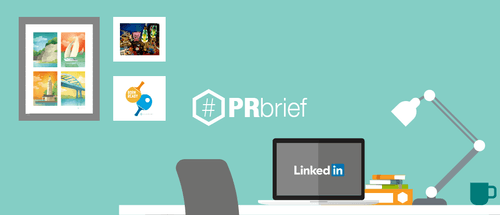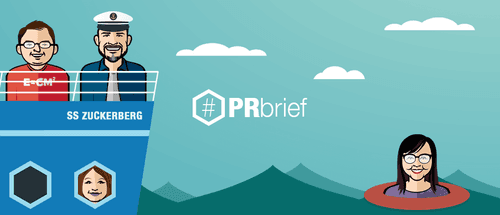In the “good old days” of social media, it seemed so easy.
Your company could create a page on Facebook or a profile on Twitter and you had a digital megaphone to help you reach fans, followers, and potential customers anywhere in the world.
Times have changed.
There has been great moaning and gnashing of teeth over how difficult it’s become for companies to reach their fans on platforms like Facebook. Some businesses feel duped, like the victims of a bait-and-switch. They worked hard to build an audience, maybe they even paid to get people to “Like” their pages, but now their posts are only reaching a fraction of those people.
Should you pay for social media exposure? The short answer is “yes.”
But here’s why …
Paying for Social Media Reach is the New Normal
Nobody likes paying for something they used to get for free. Unfortunately for online marketers, this is Facebook’s world and we’re just living in it.
The bottom line is that Facebook is a business, and its business model relies on advertising. That model now includes sponsored posts, which are a form of native advertising.
We can complain all we want about the decline of organic reach on Facebook. We can stage protests and quit the platform. Mark Zuckerberg doesn’t care. He has his own business to run with shareholders to please.
As the small business marketing blog Duct Tape Marketing points out:
“This squeeze is part of Facebook’s overall monetization strategy and applies across the board. It doesn’t matter whether you are a major brand with millions of followers and millions more in ad budget or a small business that has depended for years on Facebook to reach a loyal customer base in the hundreds or thousands. Going forward, brands that want placement will have to pay for it.”
This has been happening for at least a couple of years, and really, organic reach on Facebook can’t dip much lower.
Back in March of 2015, research indicated the typical post from a Facebook page reached 2.6% of its followers. That’s just 2.6% who saw the post in their timelines, not who actually clicked through to a website or interacted with the content in any way.
The reality is that many social platforms are using advertising opportunities as their primary business models. That means you’ll need to pay to play.
But let’s stop being so pessimistic! There are actually some very good reasons to use social media as an advertising option.
The Big Benefits of Paying for Social Media Exposure
If you think of social media in the same way you think of traditional media channels – like television, radio, and newspaper – the Facebook changes make a lot of sense.
For example, a TV station might give you free coverage on the evening news if your business has a story worth telling, but it wouldn’t give you free advertising during commercial breaks. A newspaper may let you submit an event to a community calendar, but it’s not handing you a full-page ad at no charge. So why should Facebook give it all away for free?
The good news is, once you start paying to reach an audience on social media, you’ll start noticing these advantages.
Targeting
Perhaps the biggest benefit of advertising on social media is the ability to choose the kinds of people you want to reach.
In traditional advertising, you might have a general idea of the audience that is watching a particular television show, listening to a genre or music, or reading a certain magazine.
However, with social media ads, you can really narrow it down. Facebook allows you to sculpt your target audience, by age, gender, geographic location, family status, and a wide variety of very specific interests.
If you have a spreadsheet of current customer names and emails, you can upload them to Facebook and it will create what’s called a “look-alike audience” consisting of similar users.
Traditional media will try to impress you with big numbers, boasting about overall circulation and viewership, but that’s not what’s really important.
It’s hard to wrap your head around at first, but a smaller potential audience is often better if you’re targeting the right people.
That’s because online advertising is like using a sniper rifle instead of firing buckshot while blindfolded.
Tracking
How many drivers noticed your billboard along the highway? How many people took action after they heard your radio spot? How many Millennial viewers saw your TV commercial? You probably have no idea.
Tracking your return on investment with traditional advertising is tricky. But not when you do it digitally.
Services for online advertisers, like Facebook Insights and the Facebook ads dashboard, allow you to find out not only how many people saw your ad, but also who saw it and what they did after they saw it. Put more tracking from Google Analytics into the mix, and you can learn a lot about what works and what doesn’t.
That’s why the content marketing team at Element has digital marketing specialists who analyze the numbers for you. We’ll provide you with quarterly reports and explain what your results mean.
Reach People on Mobile Devices
In its 2015 Q4 Report to investors, Facebook said it had more than 1.4 billion active monthly mobile users, and a majority of those people (943 million) use the Facebook app every day! Of course, we don’t have to show you stats to convince you that people are on their smartphones all the time.
Mobile devices have become a normal way to consume content. If that’s how people are consuming content, then that’s where advertisers need to be, too. In 2015, Facebook generated 78% of its advertising dollars from mobile ads. That says something!
With Facebook targeting, you can choose the type of mobile devices where you want your ads to appear, or have your ads run only on mobile devices. You can even have ads run simultaneously on Instagram, even if your company doesn’t have an Instagram page.
Control Creative and Control Your Budget
While Facebook does have rules for advertisers, it also provides a lot of flexibility.
When you notice an ad isn’t working, you can stop it from running and try something else. If you’re extra smart, you can perform A/B split tests on ads to find out what works best.
Now, if you ran a traditional commercial, you’d have no idea how effective it was until the campaign was over. Even if you knew your commercial was a flop, it would be very difficult (and probably expensive) to change it.
With social media advertising, you control how much you spend. Turn it on and turn it off whenever. You don’t have to make an initial investment of thousands-of-dollars. You can budget an amount that works for your business without a long-term commitment. You’ll be surprised at how much exposure just a couple hundred dollars can get you.
Pay Only for Performance
Wouldn’t it be great if you only had to pay traditional media when someone who saw your ad actually visited your business or picked up the phone?
Yeah, that’s never going to happen. However, with online advertising, you do have options like that.
There are two basic ways to pay for ads online; cost per click (CPC) and cost per thousand (CPM). With CPM, you pay a certain amount for every thousand impressions (or views) your ad receives. With CPC (or pay-per-click), you only pay when someone in your targeted audience actually interacts with your ad.
Facebook also lets advertisers select goals or objectives for ads and sponsored posts. You can choose to optimize for clicks to your website, page Likes, post engagement, video views, and even app installs.
Need Help with Your Social Media Efforts?
Social media advertising works! It can also be quite confusing.
Whether you want advice on putting together an overall social media strategy, need to create valuable content you can share with your target audience, or want someone to manage your paid social campaigns – Element can help.
We have the right people on our team. So contact us today and let’s come up with a plan to make your social media efforts worth the investment.







